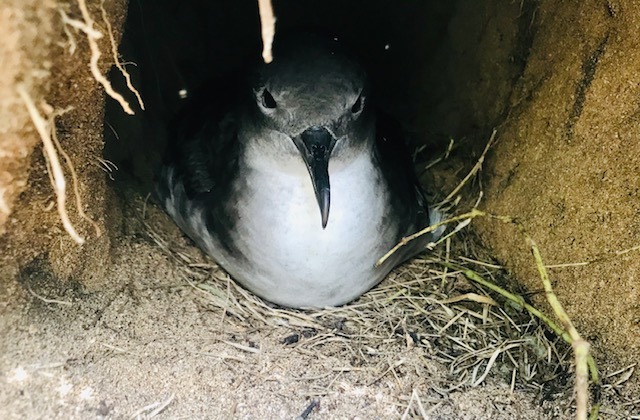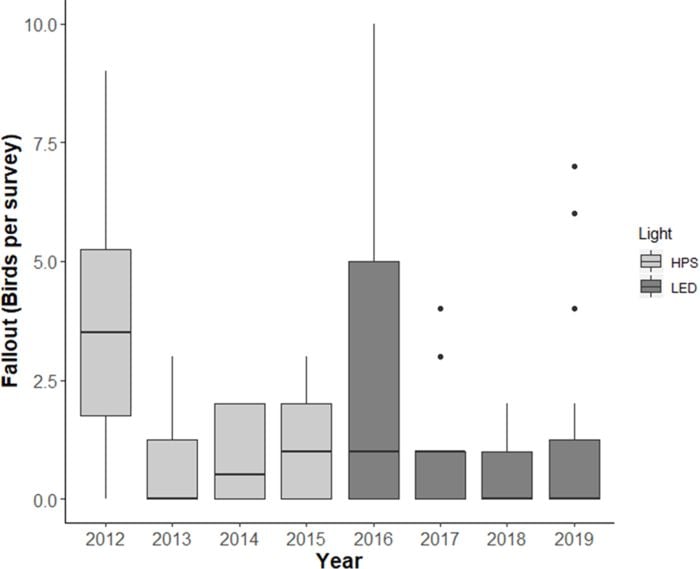
A Wedge-tailed Shearwater in its burrow, Kaena Point, Oahu; photograph from Pacific Rim Conservation
Jennifer Urmston (Migratory Bird Permit Office, U.S. Fish and Wildlife Service, Portland, Oregon, USA) and colleagues have published in the online open-access journal PLOS ONE on fledging Wedge-tailed Shearwaters Ardenna pacifica being grounded when disoriented by street lighting.
The paper’s abstract follows:
“Attraction to artificial light at night (ALAN) poses a threat to many fledgling seabirds leaving their nests for the first time. In Hawaiʻi, fledgling wedge-tailed shearwaters disoriented by lights may become grounded due to exhaustion or collision, exposing them to additional threats from road traffic and predation. While the timing and magnitude of shearwater fallout varies from year to year, little is known about how changing lighting and environmental conditions influence the risk of grounding for this species. We analyzed 8 years (2012–2019) of observations of road-killed shearwaters along the Kalanianaʻole Highway on Oʻahu to quantify the timing and magnitude of fallout during the fledging season (November–December). Our goal was to compare fallout before (2012–15) and after (2016–19) a transition in highway lighting from unshielded high-pressure sodium (HPS) to full-cutoff light-emitting diode (LED) streetlights. To detect the shearwater response to the lighting regime, we also accounted for three potential environmental drivers of interannual variability in fallout: moon illumination, wind speed, and wind direction. The effects of these environmental drivers varied across years, with moon illumination, wind speed and wind direction significantly affecting fallout in at least one year. Altogether, the interaction between moon illumination and wind speed was the most important predictor, suggesting that fallout increases during nights with low moon and strong winds. The lack of an increase in fallout after the change from HPS to shielded 3000K - 4000K LED streetlights suggests the new streetlights did not worsen the light pollution impacts on wedge-tailed shearwaters on Southeast Oʻahu. However, due to potential species-specific disparities in the behavior and light attraction of petrels, similar studies are needed before energy saving LED lights are implemented throughout the Hawaiian archipelago.”

|
Access earlier posts to ACAP Latest News on Jenn’s research on Wedge-tailed Shearwaters from here.
Reference:
Urmston, J., Hyrenbach, K.D. & Swindle, K. 2022. Quantifying wedge-tailed shearwater (Ardenna pacifica) fallout after changes in highway lighting on southeast Oʻahu, Hawaiʻi. PLOS ONE doi.org/10.1371/journal.pone.0265832.
John Cooper, ACAP Information Officer, 01 April 2022

 English
English  Français
Français  Español
Español